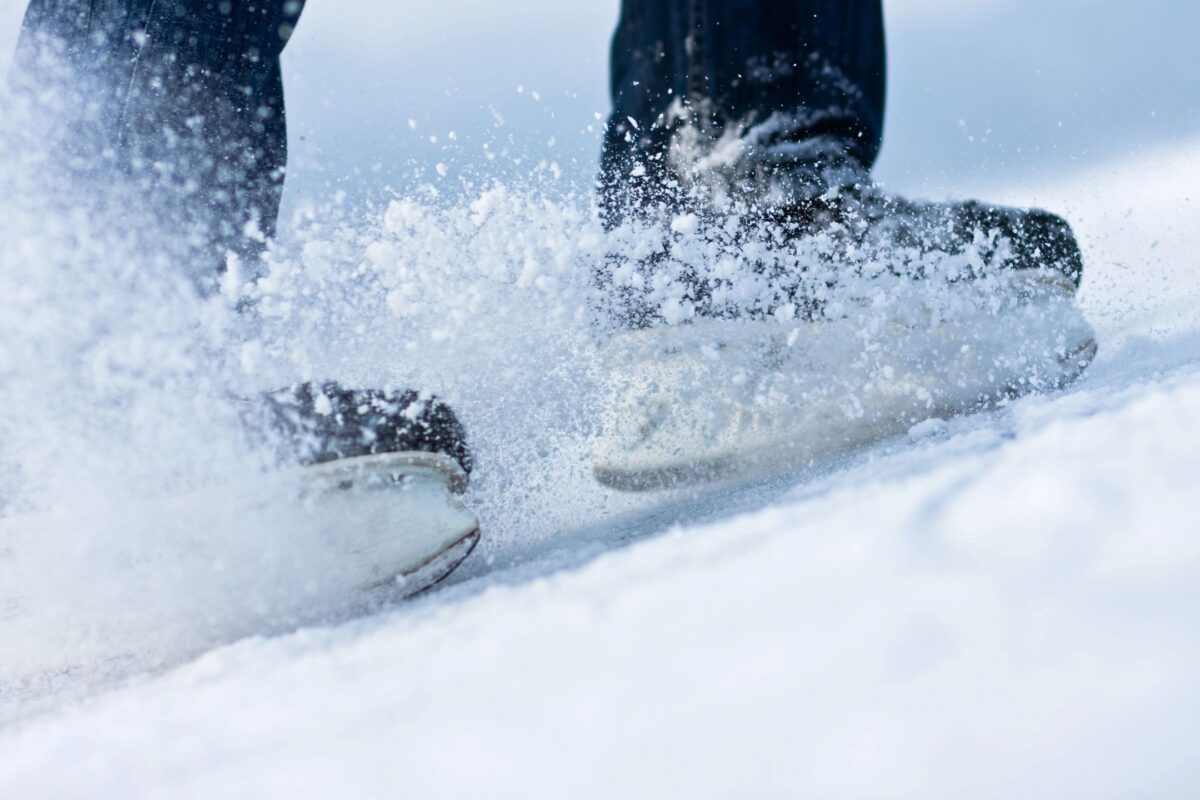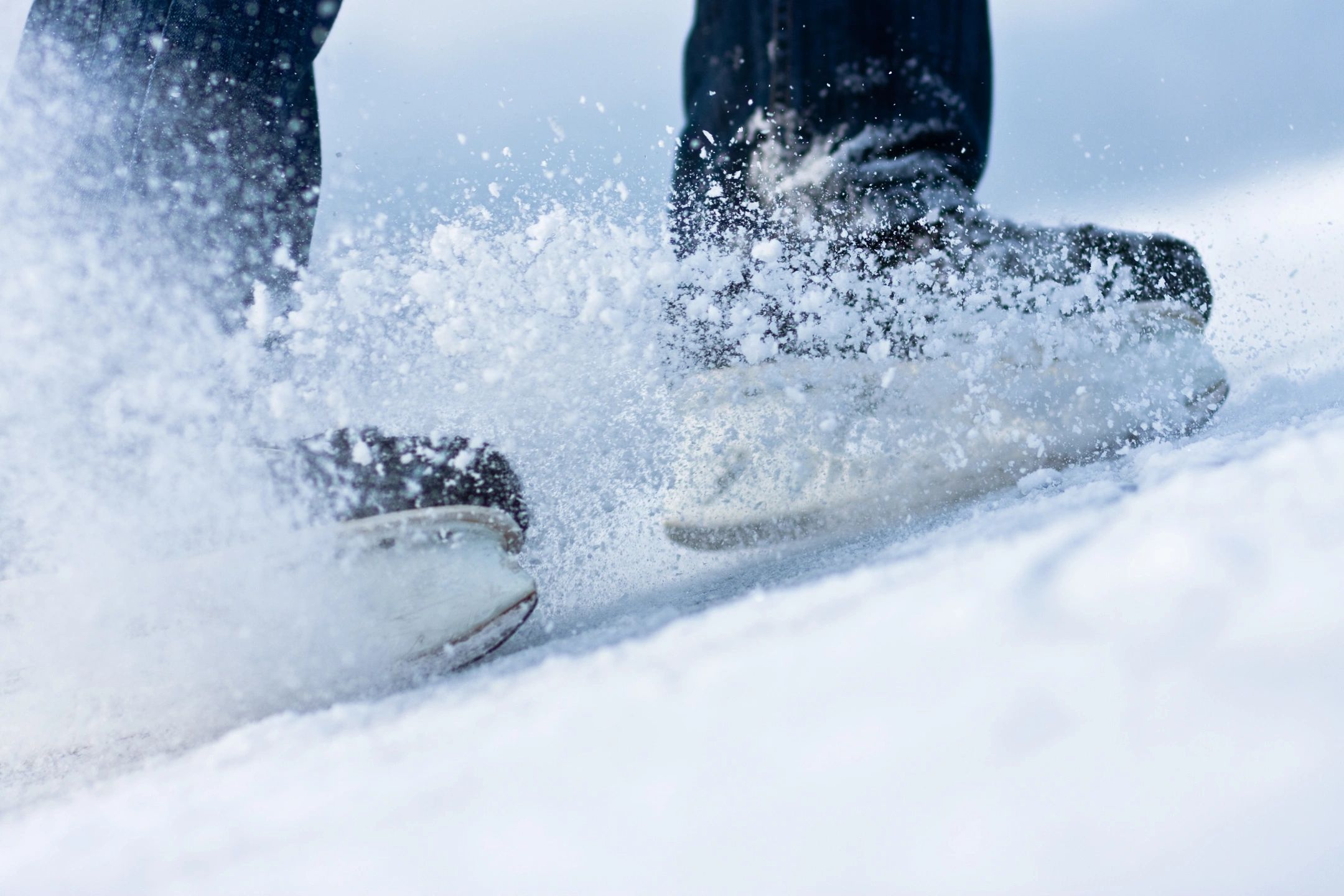What is Interference in Hockey?
Interference in Hockey: Definition & Penalties
Per USA Hockey’s definition of Interference: “Interference is defined as when a player uses their body (“pick” or “block”) to impede the progress of an opponent (non-puck carrier) with no effort to play the puck, maintain normal foot speed or maintain an established skating lane”.
Simply, Interference in hockey is when a player impedes the progress of an opponent who does not have the puck. This can be done with the stick, body, or even clothing. If a player is in the way of an opponent, it is interference. It is also interference if a player knocks an opponent’s stick out of their hand or prevents them from getting to the puck.
Interference is usually penalized by a two-minute minor penalty, but more severe and rare instances can result in a major penalty or even a match penalty. A match penalty results in the player being ejected from the game and suspended for at least one game.
One of the most common examples of interference is when a player hooks an opponent with their stick. This can slow down or stop the opponent’s progress, giving the offending player’s team an advantage. Another common example is when a player uses their body to block an opponent who does not have the puck. This can be done by putting a shoulder into them or using their arms or legs to block them.
Interference can also be called on a player who is not actually on the ice. If a player on the bench yells at an opposing player to try and distract them, this can be considered interference.
Overall, interference is any action by a player that impedes the progress of an opponent who does not have the puck. It is typically penalized by a two-minute minor penalty, but more severe instances can result in a major penalty or even a match penalty.
What Is the Penalty for Interference in Hockey?
Hockey is a sport that is governed by a set of rules and regulations. One of the most important rules is the rule that prohibits interference by a player of the opposing team. This rule is in place to protect the goaltender, who is considered to be a vulnerable player. Interference can be called against a player who:

1) Initiates contact with a goaltender without having control of the puck
2) Interferes with a goaltender while he is in his crease
3) Knocks down or pushes a goaltender out of his crease
4) Holds, tackles, or trips a goaltender
5) Uses his stick or body in a manner that impedes or interferes with the goaltender
If interference is called, a minor or major penalty will be assessed to the offending player. A minor penalty results in a two-minute stay in the penalty box, while a major penalty results in a five-minute stay in the penalty box. If a player commits interference and a goal is scored as a result of the infraction, the goal will be disallowed and the player will serve a five-minute major penalty.
To break it down further for typical minior penalties, per USA Hockey:
Minor Penalty for Interference and Face-Off Rules:
Conducted at the nearest neutral zone spot when:
- An attacking player enters the goal crease with the puck in the attacking zone.
- The attacking team has puck possession.
- The goalkeeper is in the crease.
Examples of Interference in Hockey
Interference is a hockey infraction called when a player impedes the progress of an opponent who does not have the puck. This can include using the body to block the path of the other player or using the stick to poke or slash at them. If a player is deemed to have interfered with an opponent, a penalty will be called against the offending player.

Examples of interference that can occur during a hockey game:
- Protective Screening: Blocking an opponent from pressuring a teammate with the puck
- Face-Off Conduct: Not attempting to play the puck and instead body-checking the opponent.
- Attacking Player Interference: Initiating contact with a defender after losing puck possession.
- Defensive Lane Change: Altering skating path or speed to body-check an opponent without the puck.
- Stick Disruption: Deliberately knocking the stick out of an opponent’s hand.
- Equipment Retrieval Interference: Preventing an opponent from picking up their dropped stick or equipment.
- Goalkeeper Interference: Physical contact that impedes the goalkeeper’s movement, unless rule-specified.
- Bench Interference: Players on the bench interfering with play or opponents on the ice.
In conclusion, there are many different types of interference that can be called in hockey. All of these infractions result in a penalty against the offending player, and can often lead to a power play for the opposing team.
When Can Interference Be Called in Hockey?
Interference penalties in hockey can be called when a player impedes the progress of an opponent who does not have the puck. This can be done with the stick, body, or even by throwing an object at the opponent. A major penalty is called when a player intentionally tries to injure another player with his stick or by body-checking him into the boards from behind. A game misconduct is given when a player attempts to injure an opponent with his stick or by using his body in a violent way. The referee may also issue a match penalty if he believes that a player deliberately tried to injure an opponent.
There are also situations when a player is not penalized for interference, even if he contacts an opponent who does not have the puck. This can happen if the player is playing the puck and not interfering with an opponent, or if the opponent has lost possession of the puck and is not considered to be a potential scoring threat. If a player is in the process of shooting the puck and is contacted by an opponent, no penalty will be called as long as the shot is not prevented from going on net.
A penalty shot may be awarded if a player is prevented from having a clear shot on goal due to interference by an opponent. A goal can be scored on a penalty shot, which is why it is considered to be a very serious infraction.
Video review can be used to determine whether or not interference should be called on a play. If the video shows that a player clearly impeded an opponent who did not have the puck, a penalty should be called. If the video is inconclusive, or if the interference was not severe, no penalty should be given.
How to Prevent Interference Infractions in Hockey
There are a few things that players can do to prevent interference infractions. First, players should always be aware of where their opponents are on the ice.
- By keeping track of where the other players are, players can avoid getting in their way and impeding their progress.
- Second, players should make sure that they are not in the way of the goaltender when the puck is in play. If a player is in front of the goaltender, they should be sure to move out of the way so that the goaltender can see the puck.
- Third, players should use their sticks to play the puck, not to impede the progress of other players. If a player uses their stick to block another player’s path, they may be called for interference.
- By being aware of their surroundings and using their sticks to play the puck, players can help to keep the game fair and safe for everyone involved.
- Goaltender interference is a particularly troublesome penalty, because it can be very difficult to avoid. Sometimes, a skater will unintentionally interfere with a goaltender, but other times, a skater will deliberately try to screen the goaltender or knock them off their game. If you’re a goaltender, there are a few things you can do to try and avoid interference penalties.
First, you need to be aware of where the other players are on the ice. If you know where the other players are, you’ll be less likely to be blindsided by someone who’s trying to interfere with you. Second, you need to be aware of the rules regarding interference. If you know the rules, you’ll be able to anticipate when interference might happen and you can be ready to react accordingly.
One of the best ways to avoid interference is to be aggressive. If you’re aggressive, skaters will be less likely to try and interfere with you.
Goaltenders who are constantly on the lookout for interference tend to be more successful at avoiding it. If you see a skater coming in your direction, make sure you’re ready to take action.
If you think they might try to interfere with you, make sure you make contact first. This will let them know that you’re not going to be an easy target.

Difference Between Interference and Hooking in HockeySo, what’s the difference between interference and hooking? Interference is when a player impedes the progress of another player who does not have the puck. Hooking is when a player uses their stick to grab onto an opponent’s body or stick in order to slow them down or take them off balance.
- Interference is when a player impedes the progress of another player who does not have the puck. This can be done by using the body or stick to block the player’s path.
- Hooking is when a player uses their stick to grab onto an opponent’s body or stick in order to slow them down or take them off balance.
Both interference and hooking are penalized offenses in hockey. The penalties for each vary depending on the severity of the infraction. For instance, a minor penalty for interference might only result in the offending player spending two minutes in the penalty box. However, if the interference is deemed to be deliberate contact or if it causes injury to the other player, then the penalty might be increased to a major penalty, which would result in the offending player spending five minutes in the penalty box.
Impact of Interference Penalties on Hockey Games
In recent years, there has been a growing trend of interference penalties being called in hockey games. This has led to some debate about the impact of these penalties on the game.
Some people believe that interference penalties are too harsh and are often called for incidental contact or delay of game. However, others believe that interference penalties are necessary to keep the game fair and prevent players from breaking the rules.
Interference penalties often lead to power play opportunities for the opposing team, which can be very difficult to kill off. In addition, interference penalties can also lead to goals being scored against the penalty-killing team. This can be a major momentum shift in a game and can often be the difference between winning and losing.
What do you think about interference penalties in hockey? Do you think they are too harsh or are they necessary? Let us know in the comments below!
the rules and you’re aggressive, you can reduce your chances of being called for interference.
Conclusion: The Importance of Understanding Interference in Hockey
Interference in hockey is a rules infraction that is called when a player impedes the progress of an opponent who does not have the puck. There are many different types of interference, and each can result in a penalty.
Interference can be either intentional or accidental, and it can occur between players on the same team or players on different teams.
Intentional interference is often seen as a more serious offense than accidental interference, and it can result in a major or match penalty.
Accidental interference often occurs when two players are skating in the same direction and one player accidentally bumps into the other. This type of interference is usually not considered to be as serious as intentional interference, and it typically results in a minor penalty.
There are a few different types of interference that are commonly called in hockey games. The most common type of interference is body checking, which is when a player uses his body to block or impede the progress of an opponent who does not have the puck.
Body checking is usually considered to be a more physical form of interference, and it is often seen as a more aggressive act than other types of interference. As a result, body checking is often penalized more severely than other types of interference.
Another common type of interference is stick checking, which is when a player uses his stick to impede the progress of an opponent who does not have the puck. Stick checking is usually not as physical as body checking, but it can still be considered to be an aggressive act.
There are a few other types of interference that are less common but can still be called in hockey games. These include tripping, high sticking, and elbowing.
Interference is a very important part of hockey, and it is important for players to understand the different types of interference and the penalties that can be associated with them.
References: “Rule 625; Interference”; USA Hockey Rulebook; https://www.usahockeyrulebook.com/page/show/1084676-rule-625-interference#:~:text=(Note)%20Interference%20is%20defined%20as,maintain%20an%20established%20skating%20lane.



